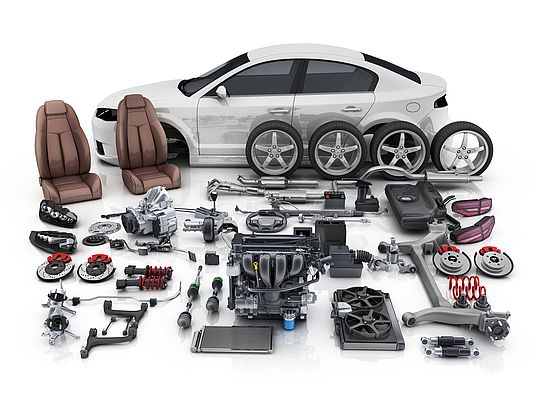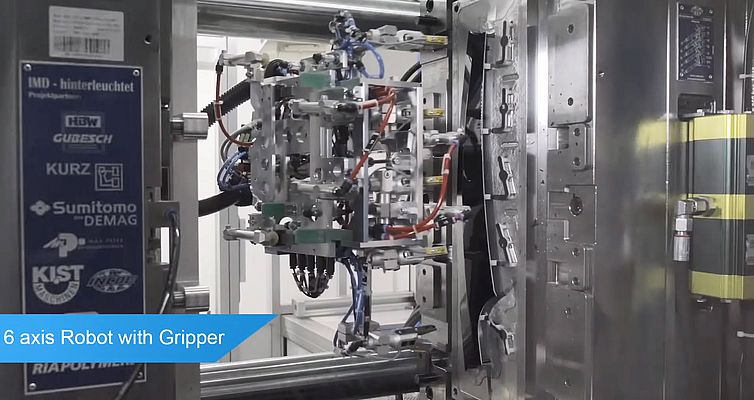By tightly integrating all elements of the plastic injection processing, IMD, robotics and data capture and management into a single turnkey cleanroom cell, part-specific traceability and process monitoring is enhanced. It represents another step towards the Smart Factory for tier 1 to 4 injection moulders, offering heightened risk management, mitigation and containment which enables organisations to respond accurately and rapidly with a targeted recall.
With the automotive supply chain being squeezed to produce components at ever more competitive costs, parent companies tend to have multiple brands in their portfolio and frequently leverage product and technologies across vehicle models, for example a chassis. “The downside to this is if there’s a cross-model quality issue, the risks and recall volumes become higher. Combine this with larger volumes of component suppliers, and the liability becomes harder to apportion,” says Nigel Flowers, UK Managing Director at Sumitomo Demag. Making traceability of components used in vehicle manufacturing even more imperative.
Issuing multiple components with a unique identifier
Designed predominantly for automotive, medical device and aerospace manufacturing environments where quality control and traceability are critical, the advance by the Sumitomo (SHI) Demag moulding cell represents a change in how multiple components are individually issued with a unique identifier. It means that any potential quality defect, which might not be picked up for several months, or even years, can be tracked back to the very day and cycle it was manufactured to achieve item-level traceability and conduct root cause analyses on parts and components.
Putting this into context, Nigel emphasises that authentication of individual components in high liability markets like vehicle manufacturing, aerospace and medical devices, requires a fingerprint style approach to traceability. He explains: “Heavily regulated products like airbag sensors, requires comprehensive audit trails. However, it is not purely about information tracking. Real-time traceability is about being able to call up data and verify the exact settings used on the injection moulding machine when that individual plastic part was made.”
The role of robotics
Using robotics is central to the in-line manufacturing process, as even a single instance of applying an incorrect code can be a major liability cautions Nigel.
To eliminate the risk of the wrong QR code being applied to the component, Sumitomo (SHI) Demag deploys a highly dexterous 6 axis robot to remove each part from the mould. The robot holds the part during the entire time the QR code is etched on at the laser marking station, never releasing until the data has been scanned and stored in the holding data system.
“What we have created is a fully automated plastic injection moulding and laser marking station that connects and communicates the code back to MES holding system where it reconciles up with the machine processing data. In addition to boosting traceability, this synchronised data gives production managers greater visibility on product cycle times and quality,” adds Nigel.
What were previously siloed manufacturing phases can now be fully integrated by leveraging Industry 4:0 technology, notes Nigel.
To illustrate the potential possibilities, Sumitomo (SHI) Demag, in partnership with KURZ, recently unveiled a new online video showcasing the making, marking and quality check of a highly innovative door trim with a high gloss day night design.
6 axis robot gripper
The fully automated Systec Servo cleanroom cell, which features a 6 axis robot with gripper, also appeared at Fakuma 2018, and breaks down the individual production steps involved in creating a super-sleek day/night design car door trim in less than 50 seconds. Once decorated using advanced IMD, foil is then added to the door trim panel during the bonding process to provide touch functionality. Process data is then integrated into the higher-level MES to generate the unique data matrix sensor, which is bonded to the part to give each individual part its traceability data.
In addition to the exact production date and time, process data that’s recorded includes the injection and dosing time, melt cushion, injection pressure and temperature.
Other elements of the production demo includes a cutting station for sprue removal, a UV curing station to give the car trim its high gloss, a cleaning station for automated polishing, and a visual inspection chamber.
Identifying and changing defective automotive parts
Helping to avoid costly recalls, this enhanced traceability enables organisations to respond more effectively should a defective automotive part or component enter the value chain. Nigel comments: “Due to globalised production platforms, it’s becoming increasingly imperative to limit operational risks exposures with targeted rather than mass recalls. For high value components or when the margin for error is zero and consumer or patient safety could be at risk, real-time traceability provides the means to limit recall exposure by improving end-to-end process transparency.”

























